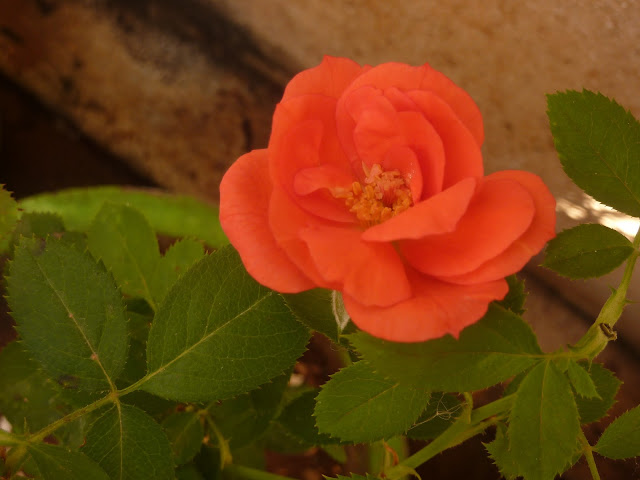Harvesting greens is such a joy. Earlier we did so much tactical things to grow amaranths but all those efforts always ended in vain. We never had a good crop. Later we started practicing a more lethargic approach. Just sprinkling some seeds here and there and letting them grow if they want to.
And to our surprise, this worked best for us.. We have harvested amaranths twice within a fortnight now with much more growing lush.Harvesting such good amaranths has been one of our dreams for so long and one years' effort in the garden has finally started to pay off.
Along with amranths, we also harvested some Purslane. This is called paruppukeerai in Tamil and it is considered more of a weed in our regions. It comes random here and there and not many people know that they are edible and that they have high nutritional value. They taste wonderful when made with dhal. This patch of purslane had come up on its own in one of our rose bush containers. Since it is very hard to come by in such clean and healthy state, we were happy to harvest them.


Some red ponnanganni keerai (Alternanthera) were also added to the harvest basket. They are also called as line keerai around here but I do not know the exact reason as to why they are referred so.We have a lush patch of red ponnanganni growing under the guava tree. Ponnanganni is a much sought after green as it cures kidney stones and helps in preventing them from happening. A regular intake of ponnanganni is good for your eyes and blood circulation too.One point to note is that the plant's growth is quite invasive. If left alone they will quickly take over your entire garden.
Since we use only very little of this green in our kitchen, every two months or so we pick huge amounts and add it to the compost or in the waste bin. It hurts to do this way but it is a mandatory task to keep these greens in check always.
Finally here is a glimpse of the greens harvested in one day .. and the basket is atleast 7 inches deep. All smiles ...










































